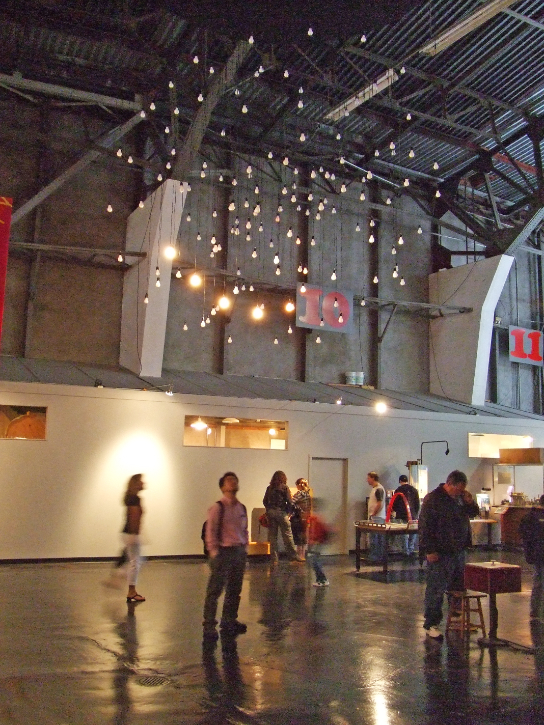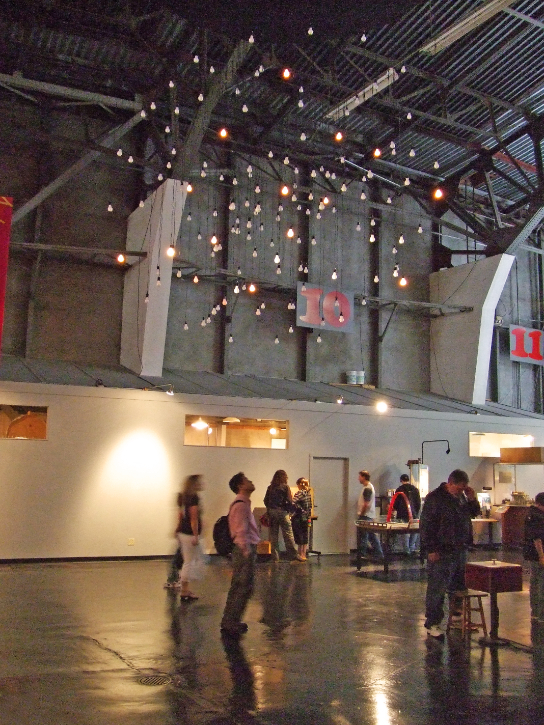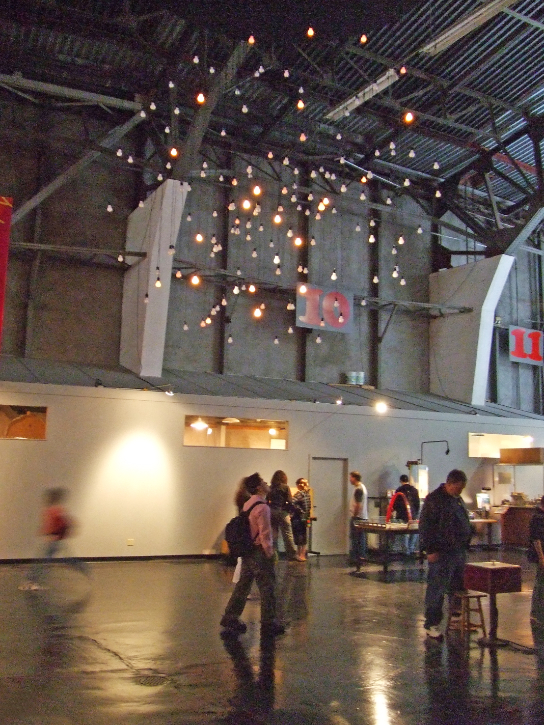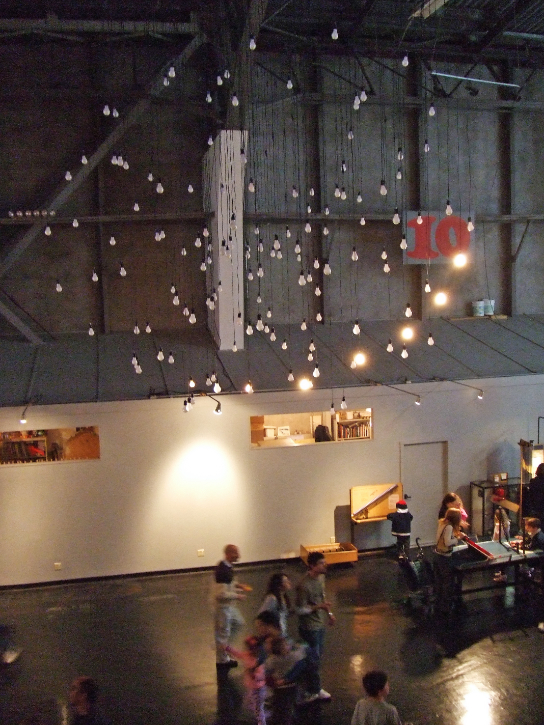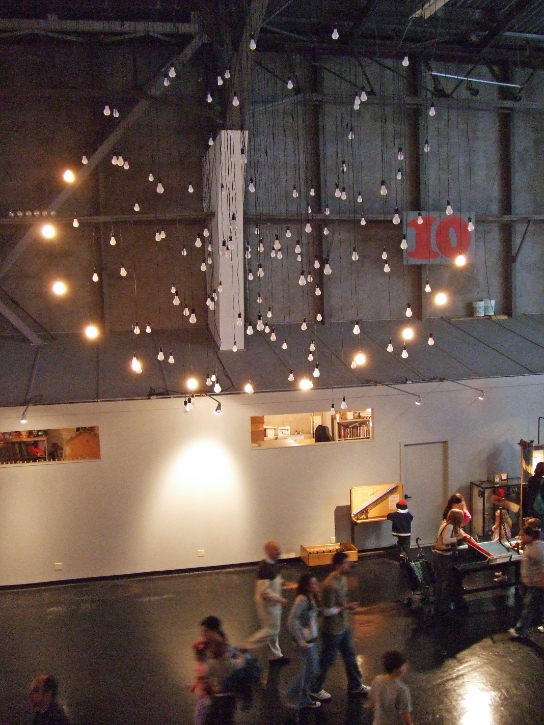“In A Different Light”; Lights, Wires, Computer control board. 15 ´diameter
This project consisted of 144 incandescent light bulbs that were hanging from the ceiling in a sphere-like cluster approximately 15′ in diameter. The light bulbs were hung at different heights in a random order, with the lowest one approximately 10′ above the floor. All of the lights were connected to and controlled by a computer board. Each light went on and off very quickly. This simple binary gesture of on/ off was used as the language to choreograph the larger composition of lights which consisted of about 64 different movements.
“In A Different Light” was an exploration into the nature of order and our perception of it. This piece used the analogy of light bulbs and lights as a means to study the idea of seeing/ perception, as well as the relationship between the visible (matter/ light bulbs) and the invisible (energy/ lights).
At first glance, the light bulbs in this installation appeared to hang randomly in space. Yet, as they went on and off, they made visible a particular path that was otherwise undetectable in the tangle of wires. As the light- “lines” were drawn in space, they appeared to be small random fragments. However, once the entire path of lights was illuminated, it became evident that all of the smaller lines were in fact only segments of a larger continuum; a stream with neither beginning nor end. In following these organically drawn circular lines, they looked as if they were going around and around rather aimlessly. Yet, by re-membering their path, an ethereal form of a sphere came to light, which, like a perfect ball of yarn, was formed by the random wrapping of the light-string.
These various displays were a simple dramatization of light and dark, which reflected the interplay between order and chaos. On a more fundamental level, however, this piece explored the idea of seeing/ perception, as well as the relationship between what is seen and that which cannot be seen. For instance, by using a light bulb as an analogy, we can see when the light is on, and cannot see when it is off, and there is no light. However, beyond this duality of light and dark, lies the reality of the electrical current which is there (in the wire) at all times, whether the light bulb is on or off (or even burned out for that matter). The same is true in regards to seeing, in the sense that vision exists as a latent potential, whether the physical eyes can see or not. To continue with the analogy of the light- although we can see the light, we cannot see the electrical current which causes it to glow, even though it is there. In the same way, the lights in this piece were hung in a particular pattern which was not evident at first. Nor was one initially aware that the entire choreography between the light and dark was in fact pre-programmed into a small computer which controled both the sense of randomness as well as the appearance of order.
In examining the nature of seeing, we are specifically referring to the primacy of an observer, without whom, none of these perceptions would have any meaning. Another way of saying this, is that the potential for seeing the duality (of light and dark), and/ or perceiving a larger reality are both invested in the observer. This quality of seeing “in a different light”, situates the observer in a special place; a liminal threshold, where she can either watch the drama played out between light and dark, and/ or take note of the larger prevailing order behind “the seen”.
With Special Thanks to Yasser Malaika, Guy Marsden and Ray Gruenig.
